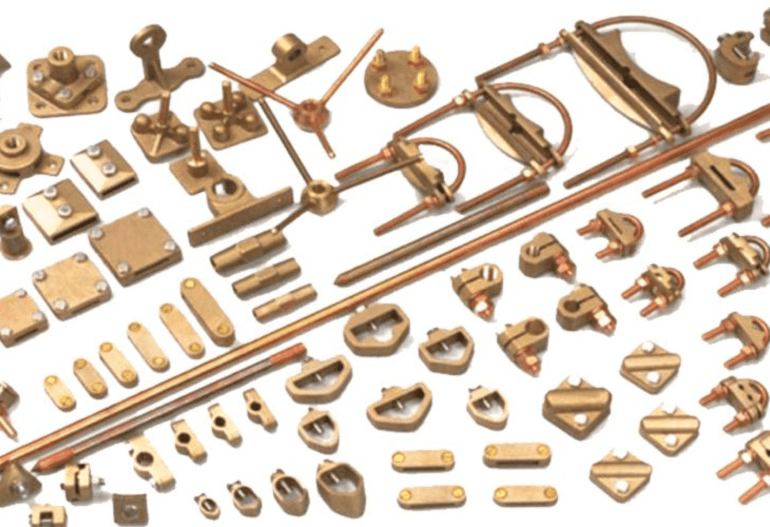The discovery of electricity created the paths for convenience, necessity, and, maybe, aesthetic beauty for humanity. But what was born as a boon to humans can also become a bane with the smallest unfortunate incident. For instance, a small spark in one wire has the potential to set the whole building ablaze!
To mitigate such accidents, buildings are designed with an elaborate earthing system. Any resourceful earthing accessories manufacturer in India knows that a perfect earthing system in any building is one with an impeccable combination of earthing components and earthing accessories.
Let’s explore more about earthing and its accessories.
What is Earthing?
Earthing means connecting the conductive parts of electric installations like home appliances to the ground. With earthing, the electric discharge is transmitted directly to the ground, thus attenuating the chances of electrical mishaps considerably.
Earthing becomes important in cases of short circuit conditions. With a proper earthing system, the current flow is hampered and instead allowed to flow through the earth. In the absence of earthing, the same current travels through a conductor, for instance, a human body, and poses a severe threat to safety.
Methods of Earthing
The prime methods of earthing are Wire Earthing, Rod Earthing, Pipe Earthing, and Plate Earthing. Let’s have a brief look.
Wire Earthing
In wire or strip earthing, a strip or bundle of copper or galvanised steel is inserted in the not-so-deep trench in the ground, either vertically or horizontally. Any stray wires of electrical installation not carrying current are connected to these bundles or strips.
Rod Earthing
A copper rod or galvanised steel rod, or hollow galvanised iron pipe is buried underground vertically. With the help of a pneumatic hammer, the rod is buried inside the ground.
Pipe Earthing
A perforated galvanised steel or iron pipe is inserted vertically in the wet ground. The size of the rod depends upon the amount of current it needs to carry and the moisture content of the soil.
Plate Earthing
A galvanised copper or iron plate is inserted into the ground at a depth of at least 3 meters. The moisture condition of the soil determines a better earthing capability of plate earthing.
Components Used
Any adept electrical earthing accessories manufacturer in India will know the importance of the components used in the earthing system. The basic components required for earthing are-
Earth Continuity Conductor
It is a low-resistance cable connecting the metallic parts of electrical installation like plug sockets, fuses, motors or generators, etc.
Earthing Lead
It is a conductor, usually a copper wire or copper strip, that connects the earth continuity conductor to the earth electrode.
Types of Earthing Accessories
Earthing relies mainly on the accessories of the earthing system. A set of durable accessories makes a safe earthing system. These include-
Air Rod Terminal Tape Base
It is used to fix the rod and connecting tape to provide vertical support to the conductors.
Crimp Connector
It is used for cable crimping stranded parallel copper cables, copper taps, and branch connections.
Brass Coupler
It avoids corrosion of rod threads by covering them properly.
Earth Bonding Point Plate
It ensures the convenient use of ground connecting points and reinforces the bars effectively.
Other accessories include G clamp, Junction Clamp, Conductor Clip, Copper Bonded Earth Rod, Parallel Groove Clamp, etc.
Conclusion
A skilled electrical earthing accessory manufactures in India knows that the protection of lives depends upon the safety of electrical installations in houses and commercial buildings. This safety, in turn, depends upon the strength and durability of the electrical earthing accessories.
If you wish to know more about it, contact IAC Electricals, the best manufacturers of electrical fittings, accessories, and hardware in Kolkata, or visit their website- https://iacelectricals.com/.






